One of the richest sources of garden design for hundreds of years has been the Mediterranean garden. Beautiful and pragmatic, the style developed out of the great diversity of Mediterranean history, culture and religion. While the style developed in the Mediterranean basin, it is adaptable to many other areas — particularly those with a similar climate, known for winter rains and long, dry summers.
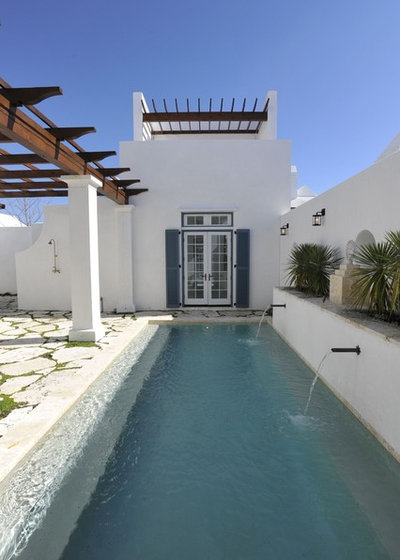
Troy Rhone Garden Design
1. Enclosure. Originating in ancient Persia, high-walled gardens offer protection and relief from the elements. With their inward focus and protection from drying winds, walled gardens still provide sanctuary in Spain, Italy and Greece, and have been adapted in Southwestern gardens in the United States.
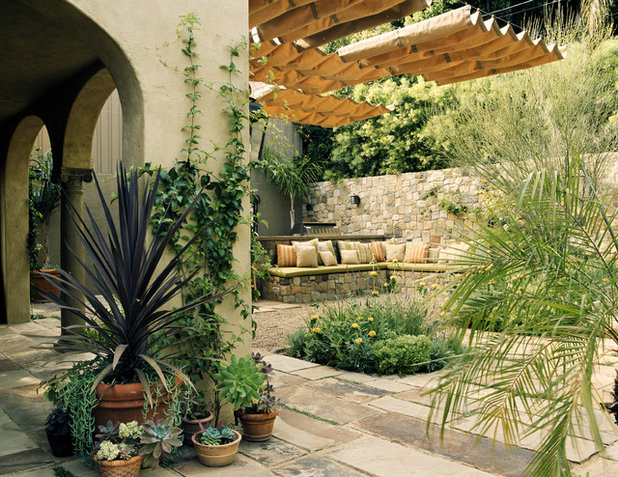
Tommy Chambers Interiors, Inc.
2. Shade. Shelter from the intense summer sun is central to Mediterranean gardens. Structures such as pergolas, loggias, arbors and arcades have been passed down to modern gardeners from the Romans.
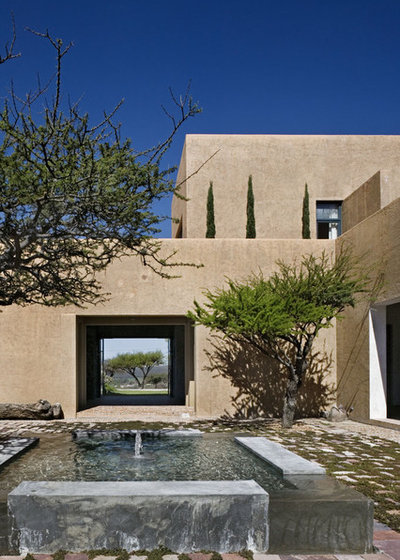 3. Celebrating water.
3. Celebrating water. Because of water’s scarcity in the Mediterranean, many water elements, such as narrow rills or dribbling fountains, offer only a trickle of water — just enough to prompt a feeling of relief from the heat. A larger water feature such as this one avoids excessive loss from evaporation with a burbling nozzle rather than one that cascades or sprays.
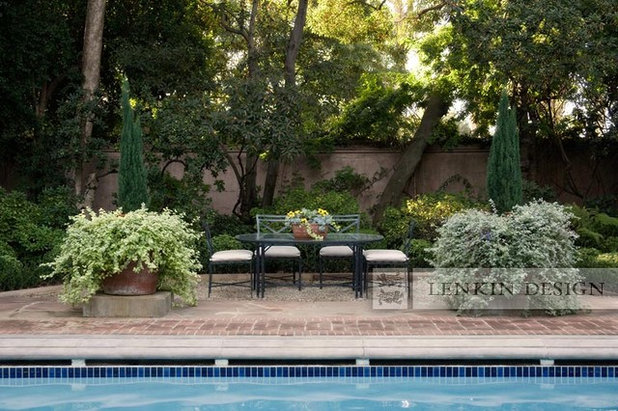
Lenkin Design Inc: Landscape and Garden Design
4. Living outdoors. The modern concept of outdoor rooms evolved from Mediterranean gardens, where indoor-outdoor activity can happen much of the year. A well-planned garden with mature trees and other forms of shade can be an energy-saving alternative to the air-conditioned indoors.
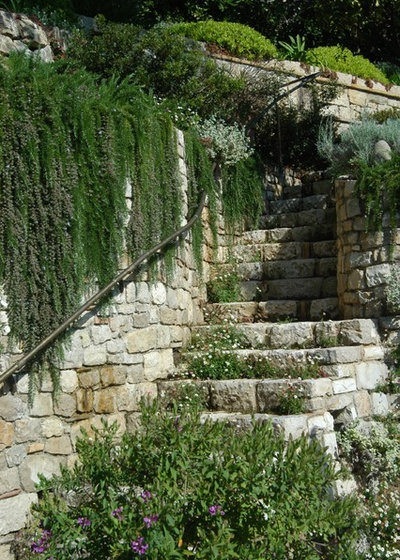
Atelier Nelumbo Garden Design
5. Local materials. Many Mediterranean gardens scramble up hillsides or are carved into rocky cliffs and feature walls and other features made from local stone. You can give your garden a sense of place and reduce its carbon footprint by sourcing materials locally.
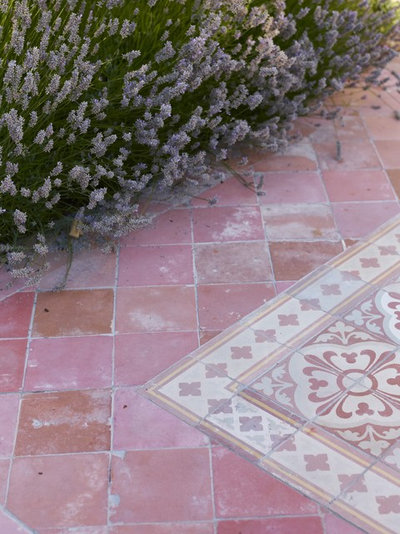
Jeffrey Gordon Smith Landscape Architecture
6. Tilework and ironwork. When religious mandates forbade the representation of living forms as decoration for dwellings or gardens, early garden makers in the Middle East used colorful tiles to emulate flower colors and wrought iron filagree to suggest trees and shrubs. This tradition came to Spain from the Moors and continues in Spanish-influenced gardens today.
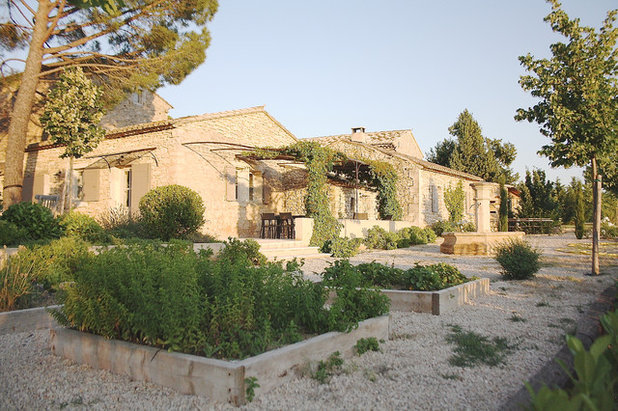
Holly Marder
7. Edibles. Herbs, citrus, olives, grapes, figs — many of the iconic plants in the Mediterranean are edible, and indeed these gardens have incorporated food production since ancient times. Growing edibles close to living areas, where they can be seen, smelled and tasted, adds to the allure of the garden.
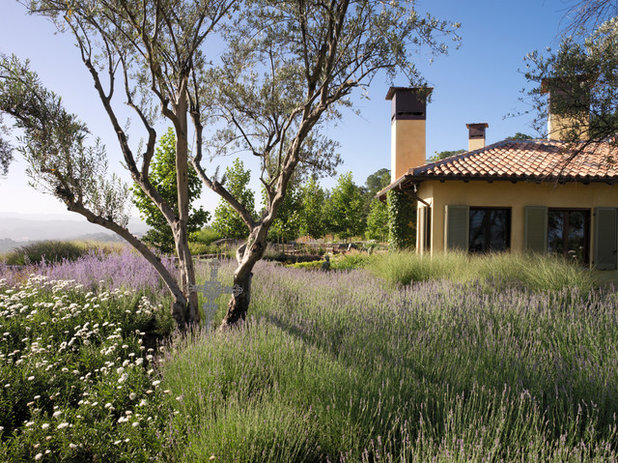
McKinney Photography
8. Finely textured plantings. Much of the foliage of Mediterranean plants has needles or is finely textured as a moisture-conserving adaptation. Many of the leaves are coated in a white fuzz, which gives the garden a light-catching, shimmery appearance.
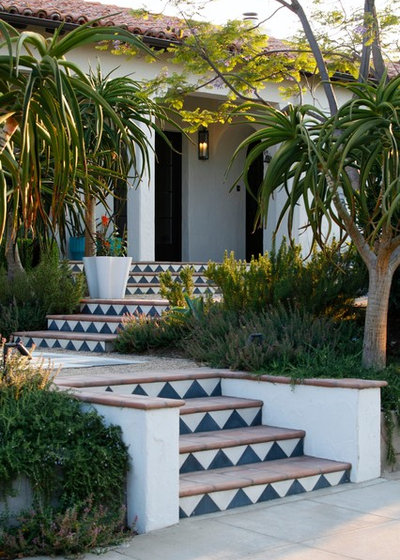
MTLA- Mark Tessier Landscape Architecture
Adapting Mediterranean style in today’s gardens. Of course, each Mediterranean climate zone has a wealth of beautiful and useful plants, many of which are adaptable to the other zones. Today gardeners and designers in these regions both treasure their native plants and mix with abandon. In temperate climates, what could be more modern than blending the time-honored design traditions of the Mediterranean with plants native to your region?
Tell us: How have you made your garden’s style reflect your area’s climate?
See more garden styles





